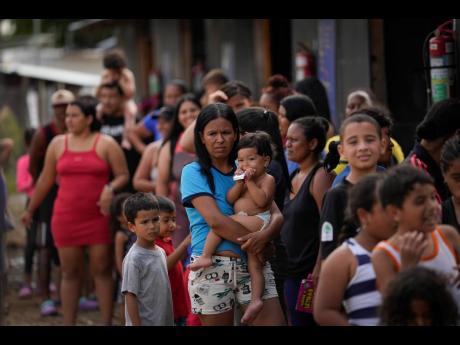Migration through Darien Gap down since new president took office
PANAMA CITY (AP):
Migration through the Darien Gap dividing Colombia and Panama has declined significantly this month since Panamanian President José Raúl Mulino took office and ordered authorities to get control of the dense jungle frontier, the country’s border police said Wednesday.
Still, migration through the Darien remains close to what it was in a record-breaking 2023, when more than 500,000 migrants – more than half Venezuelans – made the treacherous journey.
The National Border Service reported Wednesday that 11,363 migrants had crossed the border since July 1, about 9,000 fewer than the same period last year.
The agency’s director general, Jorge Gobea, attributed the reduction to the installation of about three miles (5 kilometres) of barbed wire on five trails in an effort to funnel migrants to a “humanitarian corridor”.
He also said the government’s announcement of its more aggressive efforts and plan to deport migrants back to their countries, as well as heavy rains, could have affected the number of border crossers.
Mulino took office promising to stop illegal migration through the Darien Gap. The US government agreed to pay for deportation flights for those migrants deemed inadmissible, but those flights have not started.
So far this year, more than 212,000 migrants have entered Panama through the Darien. Besides Venezuelans, others crossing include migrants from Ecuador, Colombia and China.
Panama’s active efforts to stop and deport migrants would be a massive shift.
Under the outgoing administration, Panama had sought to help migrants cross the country quickly and in an orderly fashion. Migrants generally emerged from the jungle, registered with authorities and were swept across the country to the Costa Rican border.
Strengthening enforcement efforts in Panama could potentially reduce the number of migrants reaching the US border, at least for a time until new routes are established. But it could also force migrants to use riskier paths and be a boon for smugglers.

